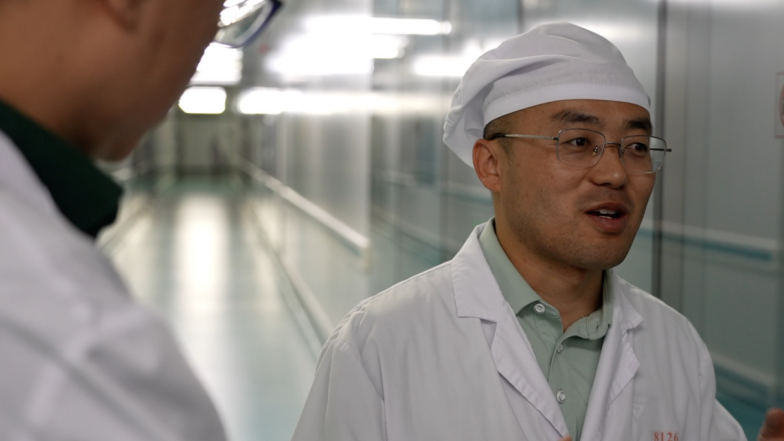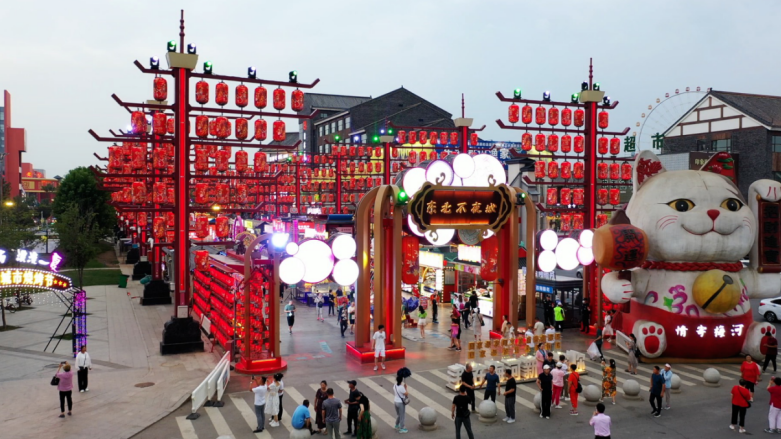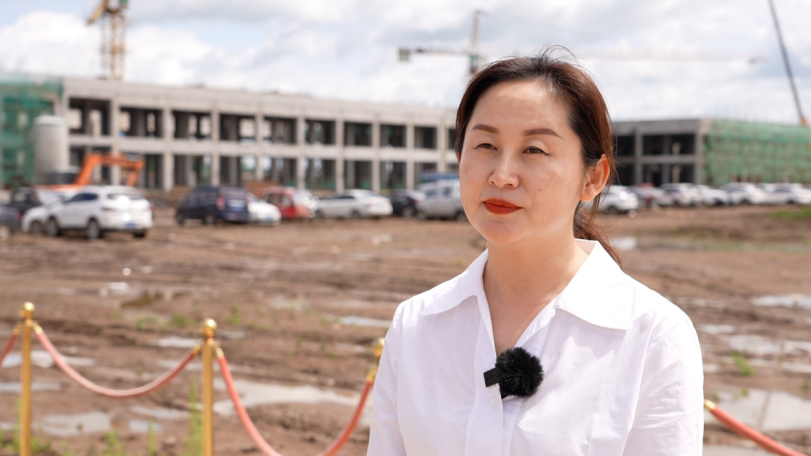
Xing Lai, 37, works at Hui Sheng Bio-pharmaceutical Company in Meihekou City, northeast China's Jilin Province. /CGTN
Xing Lai, 37, works at Hui Sheng Bio-pharmaceutical Company in Meihekou City, northeast China's Jilin Province. /CGTN
China's three northeastern provinces, namely Heilongjiang, Jilin, and Liaoning, experienced a population decline of over 30 percent between 2010 and 2020. However, there are cities like Meihekou that have witnessed a 60 percent population growth in recent years.
Once a little known city in Jilin Province, Meihekou nowadays is attracting more and more people who look to build a better life and career.
Xing Lai, 37, has made the kind of big life decision many wouldn't dare risk, uprooting his whole family from a provincial capital, and moving to a fourth-tier city. He even persuaded his wife to quit her job, and said he has faith the move will work out for the best.
"After being hired, we knew nothing about Meihekou until the company organized a tour for employees and family members to the city. We were impressed by the open public space, museums and libraries, as well as the many amenities," said Xing, the supervisor of the Quality Control Department of Hui Sheng Bio-pharmaceutical Company.

Street view of Meihekou City, northeast China's Jilin Province. /CGTN
Street view of Meihekou City, northeast China's Jilin Province. /CGTN
For new dwellers like Xing, the pristine streets, parks and public spaces may be appealing, but more is needed to convince others to relocate. The key attraction is the promising career paths now available in the city.
The fourth-generation insulin product of Xing's company is now at the final stage of clinical trials, and it's expected to get national approval sometime this year.
Cao Haiyan, CEO of Hui Sheng Bio-pharmaceutical Company noticed that many of the elite employees in the company have quit their jobs in well known enterprises and foreign companies in first-tier cities to work at his company in Meihekou.
"They know the salary here is 10 to 20 percent lower, but they do so because of the living environment here and the prospects of our company entering the billion dollar insulin market," Cao said.

Zhao Xiaohong, the director of Meihekou's development and reform bureau, in an interview with CGTN. /CGTN
Zhao Xiaohong, the director of Meihekou's development and reform bureau, in an interview with CGTN. /CGTN
The city's population has increased from 300,000 in 2016 to 500,000 in 2020. By observing the way people live their lives and the available job opportunities in the city, it's not difficult to understand what's driving this phenomenon.
"Optimizing the industrial structures and supporting ecological face-lifts have been top priorities for the city's government," said Zhao Xiaohong, director of Meihekou's development and reform bureau.
Senior officials have been appointed as team leaders for different working groups to facilitate the new projects, Zhao said, adding that, from registering businesses to legal and tax support, these working groups are here to streamline the process.
Those are among the policies and initiatives the northeastern China region, which used to be a center of agriculture and heavy industry, has adopted in recent years to solve its economic challenges.
So it's not difficult to see why more and more people turning to cities in northeast China to pursue career development.
It's been said people "vote with their feet." The logic is clear: New sectors mean an expanded workforce. New residents mean new customers for local businesses, which in turn increases tax revenue. And with more revenue, cities can invest more in public transport, schools and parks, making the city attractive for everyone.